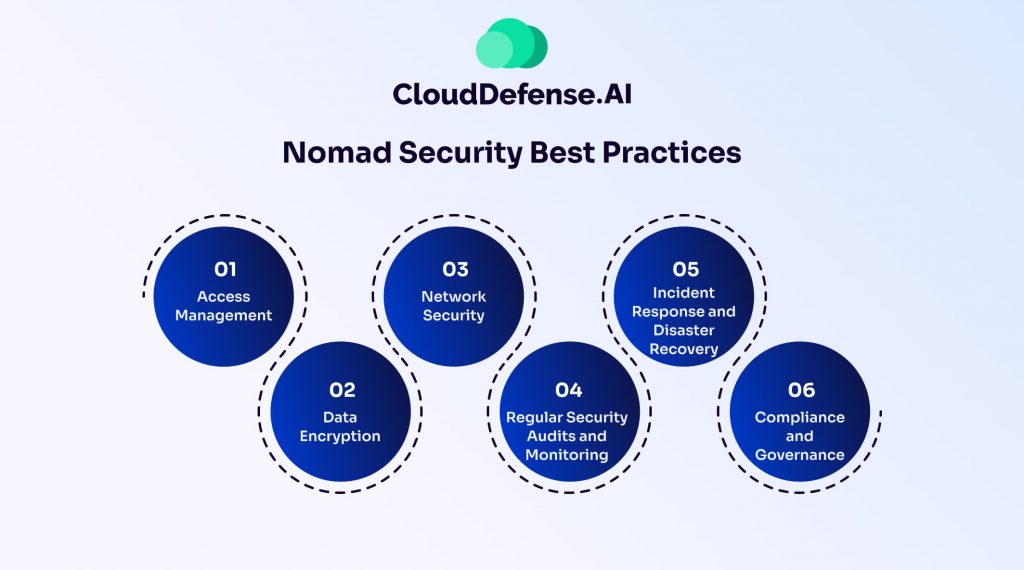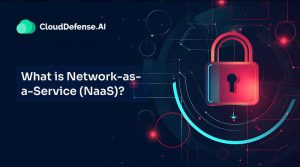HashiCorp Nomad, a widely embraced orchestration platform, gives organizations the ability to efficiently handle both containerized and non-containerized applications. Even though Nomad is well-liked and effective, just like any other software, it isn’t invulnerable to security issues. Considering this, it’s absolutely crucial to spot and deal with potential security risks to keep your infrastructure robust.
Security problems in Nomad can arise from various sources, such as misconfigurations, outdated software dependencies, or unexpected exploits. Being aware of these issues in a timely manner and taking proactive steps are essential to shielding yourself from potential threats. Continue reading to learn more about HashiCorp Nomad security vulnerabilities and how to deal with them.
Understanding HashiCorp Nomad
HashiCorp stands out as a mighty and flexible orchestrating tool meticulously crafted to handle containerized and non-containerized applications. Being a part of HashiCorp’s family, Nomad streamlines the art of deploying and scaling applications across a myriad of infrastructure possibilities. By adopting a declarative configuration approach, Nomad boosts operational efficiency by automating pivotal tasks like allocating resources, setting schedules, and adjusting scales.
Accommodating a spectrum of workloads, Nomad acts as a unified hub for overseeing applications, thereby making it a sought-after companion for organizations valuing simplicity and adaptability in handling their infrastructure. Its design, which is user-friendly and approachable, seamlessly melds with other HashiCorp tools, adding an extra layer of allure when orchestrating a diverse set of workloads.
Overview of Nomad Security Vulnerabilities
Node Security Vulnerabilities
Nomad nodes need to have their security controls in place; otherwise, they become vulnerable. Whether it’s APIs that aren’t adequately secured or nodes with misconfigured permissions, malicious actors could exploit these weaknesses, putting the overall security of the Nomad infrastructure at risk.
Authentication and Authorization Challenges
When it comes to HashiCorp Nomad, there’s a need to be wary of CVE security issues tied to authentication and authorization. If the authentication methods are weak or not configured properly, it opens the door to unauthorized access to Nomad clusters. Likewise, if access controls aren’t up to par, there’s a risk of unauthorized users or applications gaining more privileges than they should within the system.
Communication Risks
Nomad’s communication channels could potentially be a weak link in terms of security. If encryption isn’t set up correctly between Nomad nodes, clients, and management components, there’s a chance that attackers could exploit these unsecured paths to compromise the confidentiality and integrity of the information being transmitted. It’s like leaving the door open for eavesdropping or interception of sensitive data.
Plugin Risks
Using plugins in Nomad is great, but it does introduce some potential security headaches. If the plugins aren’t developed securely or if they come from sketchy sources, they could pose serious risks to the Nomad environment. Regularly checking and validating the security of these plugins is a must to avoid any unwanted surprises.
Job and Task Configuration Issues
This is one of the key issues stemming from job or task misconfigurations in Nomad. If sensitive information within these definitions isn’t handled securely, there’s a chance it could be unintentionally exposed, creating potential security holes in the Nomad deployment.
Updates and Patch Management Gaps
It’s crucial to keep Nomad and its dependencies up-to-date with the latest patches. Failing to do so might expose the system to known vulnerabilities. Think of it like keeping your software armor polished and ready to fend off any potential security threats.
Container Risks
Nomad relies on containerization for running tasks, but this also means that security vulnerabilities in container runtimes or images could impact the overall security of tasks on Nomad. It’s like making sure the containers themselves are well-sealed to prevent any unauthorized access or Hashicorp Nomad data compromise.
External Dependencies Exposures
Nomad embraces various external tools and services, but they need to be securely integrated. Failing to do so might introduce vulnerabilities, giving attackers a chance to exploit connections and configurations with external dependencies and compromising the Nomad environment. It’s like having a strong defense around your digital castle.
What are the Impacts of HashiCorp Nomad’s Vulnerability on Systems?
Compromised Infrastructure
HashiCorp Nomad security vulnerabilities could lay bare the entire infrastructure to potential compromise. Attackers, taking advantage of these vulnerabilities, could seize control of Nomad and potentially extend their influence to other linked systems. The compromise of critical infrastructure elements poses a serious threat to the overall stability and security of an organization’s IT environment.
Unauthorized Access and Data Breach
If sneaky individuals exploit weaknesses in HashiCorp Nomad, it could lead to them getting unauthorized access to crucial systems, possibly resulting in a data breach. By taking advantage of security gaps in Nomad, attackers might find their way into sensitive information, jeopardizing the confidentiality and integrity of data within the Nomad environment. The fallout from this unauthorized access doesn’t just stop at Nomad; it ripples out, affecting the overall security setup of interconnected systems and services.
Service Disruption
If vulnerabilities in Nomad are successfully exploited, it might throw a wrench into the works, causing service disruptions or downtime. A compromised Nomad system might go offline, setting off a chain reaction affecting connected services and essential business operations. The resulting downtime can have real-world consequences, impacting an organization’s ability to provide services consistently.
Execution of Malicious Tasks
If vulnerabilities in Nomad are exploited, it could give attackers the power to carry out harmful tasks within the environment. This might involve running unauthorized code, tampering with tasks, or taking other actions that put the system’s integrity at risk. The execution of malicious tasks within Nomad directly threatens the operational and functional aspects of the deployed applications.
Loss of Confidentiality and Privacy
Nomad vulnerabilities might open the door to unauthorized access and exposure of sensitive information, resulting in a loss of confidentiality and privacy. When data within Nomad, like job configurations or task details, is compromised, it raises concerns about the security of crucial business information, potentially impacting the organization’s reputation.
Reputational Damage
Security incidents stemming from Nomad vulnerabilities can deal a blow to an organization’s reputation. When the public gets wind of security breaches, trust in the organization’s ability to secure and manage systems effectively can take a hit. Maintaining a positive reputation is crucial for business continuity, customer trust, and stakeholder confidence.
Financial Loss
The impact of HashiCorp Nomad security vulnerabilities isn’t just about the tech; it includes potential financial losses due to downtime, recovery costs, and legal consequences from data breaches. Organizations may find themselves shelling out money to investigate and fix vulnerabilities, and the financial implications can be significant.
Regulatory Compliance Issues
HashiCorp Nomad security vulnerabilities might lead to non-compliance with industry or regional regulations related to data protection and system security. Going against the rules could result in legal consequences and fines for organizations caught violating applicable regulations, making the impact even more severe.
Operational Challenges
Organizations may face operational challenges when dealing with and bouncing back from a Nomad security incident. After an attack, there may be a need for extensive efforts in incident response, recovery, and the implementation of beefed-up security measures. These challenges can strain resources and disrupt regular business activities.
Extended Attack Surface
Vulnerabilities in Nomad open up more opportunities for adversaries, expanding the attack surface and providing chances for lateral movement within the infrastructure. If Nomad’s weaknesses are successfully exploited, attackers could pivot to other systems, escalating their privileges and further compromising the overall security posture of the organization.
Nomad Security Best Practices
To use HashiCorp Nomad safely, it’s essential to follow best practices for securing your Nomad deployment. Here are some recommendations:

Access Management
Managing identities and access in the cloud is a crucial step for ensuring top-notch security. It’s all about setting and enforcing policies that control how users access cloud resources. By using robust authentication methods like multi-factor authentication (MFA), we can make sure that user verification is solid.
Regularly checking and auditing user permissions is key—it’s all about sticking to the principle of least privilege. This minimizes the risk of anyone getting their hands on sensitive data or services without the proper clearance.
Data Encryption
When it comes to data, security is non-negotiable in cloud environments. Encrypting data both when it’s on the move and when it’s at rest adds an extra layer of protection against unauthorized access. Think of it like a secret code only the right people can decipher. Using protocols like Transport Layer Security (TLS) for secure communication between clients and cloud services is a must. And don’t forget about the encryption services offered by the cloud provider, like AWS KMS (Key Management Service) or Azure Key Vault—they help keep those encryption keys under lock and key.
Network Security
Now, let’s talk about network security. It’s like the guardian angel of your cloud infrastructure. Implement firewalls, virtual private clouds (VPCs), and network segmentation, which help control and monitor traffic, making sure nothing fishy slips through the cracks.
Keeping an eye on network traffic regularly and having intrusion detection and prevention systems in place are like having your own personal security details. And for those pesky distributed denial-of-service (DDoS) attacks, we’ve got protection mechanisms in place to keep them at bay, ensuring your cloud services are always available and reliable.
Regular Security Audits and Monitoring
Security is not a one-and-done deal—it’s an ongoing commitment. Regular security audits and assessments are like routine check-ups for your cloud infrastructure. They help identify HashiCorp Nomad security vulnerabilities and misconfigurations, so you can patch things up before any real harm is done.
Monitoring for security events and anomalies in real-time is your early warning system, and automated alerts for suspicious activities mean you can respond swiftly to security incidents, minimizing the impact of any breaches and keeping your security game strong.
Incident Response and Disaster Recovery
Now, when things don’t go as planned and security incidents happen, you’ve got to be prepared. Having a well-thought-out incident response plan is like having a proactive stance on standby. It outlines clear procedures for identifying, responding to, and recovering from security breaches. And let’s not forget about disaster recovery—because, well, accidents do happen.
A solid strategy here ensures business continuity in case of data loss or system disruptions. Regularly testing the restoration process guarantees your strategies work when you need them, keeping your organization ready for any security scenario.
Compliance and Governance
Last but definitely not least, let’s talk about compliance and governance. Following industry-specific rules and regulations is the bedrock of cloud security. Establishing governance policies ensures that your cloud resources are doing what they should and aligning with your organizational goals and industry best practices.
Regular review and updates to policies are essential to keep pace with changes in the organization’s structure and the evolving cloud security landscape, maintaining a strong security and compliance posture.
FAQs
Is Hashicorp nomad open source?
Yes! HashiCorp Nomad operates as an open-source orchestration and cluster management tool within the HashiCorp ecosystem. It follows the Mozilla Public License 2.0, offering users the freedom to inspect, tweak, and share the source code. This not only increases transparency but also encourages collaboration within the community.
What are the key features of Nomad Hashicorp?
HashiCorp’s Nomad stands out as a versatile and scalable cluster orchestrator, meticulously crafted for the dynamic scheduling and deployment of applications. The Nomad enterprise features encompass support for multiple data centers and clouds, declarative job specifications, automatic scaling capabilities, and seamless integration with HashiCorp’s broader ecosystem. Nomad takes the complexity out of the equation, streamlining and automating the deployment of applications across diverse infrastructure environments.
What is the vault vulnerability of HashiCorp?
The vulnerability in HashiCorp Vault centers around how it manages SQL queries when communicating with its backend database. Cyber attackers can exploit this weakness by injecting harmful SQL statements into startup configuration parameters, potentially running unauthorized SQL queries on the targeted database. In more severe cases, it might lead to the escalation of privileges, enabling the execution of arbitrary system commands on the host machine.
Conclusion
In conclusion, it’s crucial to understand the security vulnerabilities that come with HashiCorp Nomad to keep your infrastructure safe. With organizations relying more on Nomad for flexible workload coordination, it’s essential to take proactive steps. Tackling HashiCorp Nomad security vulnerabilities involves a well-rounded strategy, including strong access controls, regular audits, and ongoing monitoring.
HashiCorp’s dedication to security updates and community involvement lays the groundwork for resilience. By staying alert and adopting best practices, users can make the most of Nomad’s capabilities while strengthening their systems against possible risks. In this ever-increasing threat landscape, taking a proactive security approach is key to ensuring Nomad deployments maintain integrity and reliability.







